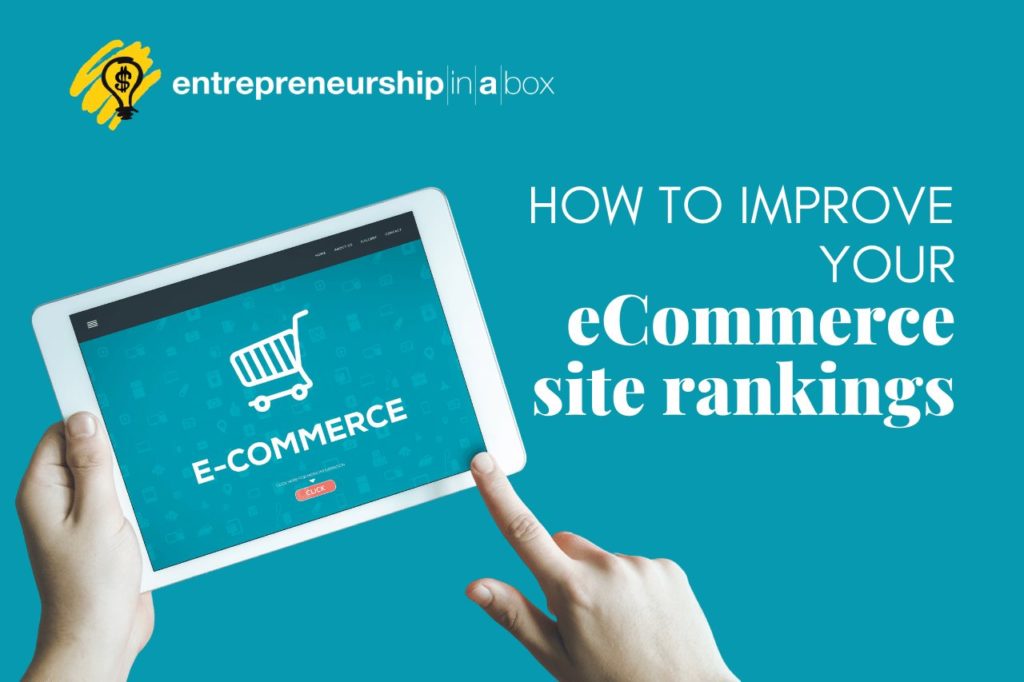Rankings are important for every website but especially for eCommerce sites due to the nature of the business. Online stores depend on the attention they get online, so you need to make sure that Google ranks you higher (preferably on page #1) and also make sure to send highly-qualified traffic towards your website.
Why is it so important to land on Google’s page #1? Well, for starters, websites that rank in one of the top 3 organic positions receive more than 58% of all clicks from users. But even though the first result outperforms the others in terms of CTR, it’s not so bad to rank lower on Google’s page #1. One study found that the first ten search results on Google fare much better than those on page #2.
In other words, if you don’t optimize your e-store for search engines, you’re going to lose major click opportunities and sales. The best option is to hire a professional eCommerce SEO company that will help you get on the first page of Google. However, if you can’t afford professional help, we’ve compiled a list of 6 tips that will help you improve your eCommerce site rankings.
1. Research Your Competition
Before you actually start developing a strategy to improve your rankings, take some time to check what your competitors are doing. Make sure to check the following:
- Your competitors’ websites and UX
- Identify their traffic sources
- Inspect their content
- See what keywords they’re ranking for
- Analyze their SEO structure
- Research their backlink sources
- Explore their shipping and return policies
- Monitor their social media accounts
Besides your competitors’ websites, make sure to check all possible websites that might be talking about your brand or products. This can include industry blogs and other sites that may not even sell the product. These sites can be competition or sometimes an opportunity for you to contribute content in exchange for product shout-outs.
2. Improve Your Site Navigation
Make sure your site navigation is vertical and smooth, that everything is out in the open and easy to access.
Check out your competitors’ strategies to see how they place their product pages, descriptions, and categories. This will help you sort out the flaws on your eCommerce website and help you figure out which elements would make your UX different from that of your competitors?
However, bear in mind that your website is not only the front-end. In many cases, the website admins are non-programmers and if they can’t find their way around the dashboard, the carefully designed front-end will turn into a disaster.
If you’re using WordPress, one thing that you can do to improve the UX of your admin is to organize the website contents well. Luckily, the times when WordPress posts were organized only by tags and categories are gone. Today, custom post types allow you to separate your content efficiently. Here are a few reasons why you should consider using custom post types:
- They allow better backend management of your content
- They increase efficiency and productivity;
- Custom post types make a custom display of content possible;
- They improve site security by eliminating third-party plugins;
- They improve usability by allowing you to create a single process that even non-techies can understand.
3. Keyword Optimization
When it comes to ranking higher in SERPs, one of the first things you need to do is optimize your pages using highly targeted keywords. These keywords should be relevant to your niche in order to bring in organic traffic.
When choosing your keywords, avoid the ones that are too broad or highly-competitive and focus on long-tail keywords. There are several tools you can use to find good keywords like Google’s Keyword Planner or Moz’s Keyword Explorer.
4. Start Blogging
Once you determine which keywords you want to rank for, some of them will probably get lost due to the more important ones. One great way to host keywords that can’t make it to the main site is by creating a blog.
Blog content allows you to optimize your blog pages for other keywords. You can use your blog to share your brand’s story, create how-to guides that help users, and offer valuable tips. You can either manage the blog yourself or hire a professional content writer who is experienced in using SEO keywords in articles. Whichever option you choose, be careful not to stuff your blog posts with keywords as you might end up penalized by Google.
Make sure to integrate your blog link with your site so that it’s visible to the audience. You should also consider creating an ebook. It can be a compilation of the most successful blog posts or a guide written from scratch.
5. Inbound Links
From an SEO perspective, linking is very important, but it’s necessary to link to and get linked by credible sites. A proper link building strategy will help you get more traffic but also provide an opportunity for you to produce free, valuable information and, as a result, build trust with customers.
To get started, see where your competitors get their inbound links. Then, check the spam score of these websites and eliminate any websites that have a high spam score. Once you have this list, go ahead and try to get linked to those sites.
You can also do the following:
- Contact your suppliers and ask them to link back to you
- Exchange links with manufacturers or stores that sell complementary products
- Sign up to groups and communities related to your industry that can get you valuable inbound links.
- Create high-quality content that others will want to share and link to.

6. Usability and Mobile Friendliness
Usability is a key factor that can make or break your business. Good usability means repeated site visitors and, as a result, a better position in SERPs. If you’re not sure about your site’s usability, you can run a usability test using tools like Optimizely and Crazy Egg.
Mobile optimization is another important factor that influences usability. In this day and age, having an optimized website is an absolute must and here’s why:
- More than 610 of customers who visit a website that is not mobile-friendly are very likely to go to a competitor’s website;
- More than 30% of mobile Internet users mostly go online using their smartphones.
Mobile optimized websites make reaching more customers at a faster rate possible. A crucial advantage is that it can boost customer satisfaction. Having a mobile-friendly website will only benefit your brand’s reputation, making it look relevant and modern.
Final Thoughts
Improving your website’s rankings isn’t easy but it is also not impossible. Sometimes you need a bit of help to increase your organic traffic, reach the right customers, and boost your CTRs, and these six tips will help you do just that!



